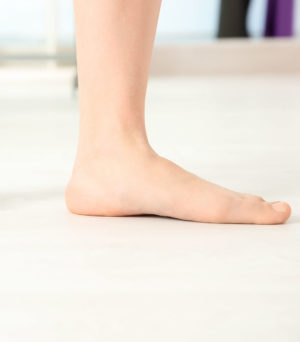 Flatfoot deformity is a foot condition that becomes more common as we get older. After decades of physical stress, the tendons in your feet can get loose or fail to work in proper order, and this can lead to fallen arches and flat feet. Reconstruction is more common in younger patients, while a fusion operation is considered the standard for older patients, but now more adults are turning to a reconstructive operation to address their flatfoot deformity due to improved techniques and patient outcomes.
Flatfoot deformity is a foot condition that becomes more common as we get older. After decades of physical stress, the tendons in your feet can get loose or fail to work in proper order, and this can lead to fallen arches and flat feet. Reconstruction is more common in younger patients, while a fusion operation is considered the standard for older patients, but now more adults are turning to a reconstructive operation to address their flatfoot deformity due to improved techniques and patient outcomes.
The improved outcomes were confirmed during a recent study that was presented at the American Academy of Orthopedic Surgeons’ annual meeting. During the study, researchers evaluated a group of patients over the age of 65 with stage two adult acquired flatfoot deformity and compared their reconstructive outcomes to those of a younger subset undergoing the same procedure.
Previous research suggested that reconstruction provides better long term outcomes and improved mobility compared to fusions, although there is a slightly higher risk of surgical failure for the reconstructive operation based on the age and health of the patient.
“Overall, flatfoot reconstruction provides better long-term outcomes and mobility of the foot when compared to foot fusions,” said Scott J. Ellis, MD, senior author of the study. “However, there is a chance that reconstruction could fail, and to avoid a long, arduous recovery with multiple surgeries, patients older than 65 commonly skip reconstruction and opt for a fusion. My colleagues and I wanted to investigate if this was still a viable option for elderly patients in the hopes of maintaining flexibility in their foot.”
Adult Flatfoot Study
Researchers examined 130 patients who were placed in three different groups:
- Under 45 years old (young)
- Between 45 and 65 years old (middle-aged)
- Over 65 years old (oldest)
Researchers analyzed clinical outcomes using the Foot and Ankle Outcome Score and compared pre- and post-op scores at a minimum of two years. After looking at the data, researchers found that patients in the oldest group did not demonstrate any differences in their outcomes compared to the other two groups. Additionally, patients in the oldest group were not more likely to undergo a subsequent removal of hardware or a revision procedure than patients in the younger cohorts.
“Our initial hypothesis was that there would be increased complications for patients in the older group. However, we saw positive consistent surgical outcomes across all age groups,” said Dr. Ellis. “Depending on the severity of the condition, we believe a flatfoot reconstruction is a great option for patients regardless of their age. For the right patient, it can be the last surgery that they need.”
According to Ellis, more orthopedic surgeons should be considering adult flatfoot reconstructive surgery instead of just assuming a fusion operation is the safest route, even if it compromises mobility in the foot. Maintaining flexibility and mobility in the foot is important as we get older, as it can help us prevent against devastating fall injuries.
“This is strong evidence to support that flatfoot reconstruction can be an option for everyone, but we need to continue to follow patient clinical outcomes over an extended period of time to provide more data for this sparsely investigated topic,” concluded Dr. Ellis.
So if you have noticed that your arches have fallen and you’re dealing with tendon or foot pain, talk to Dr. Silverman about your treatment options.